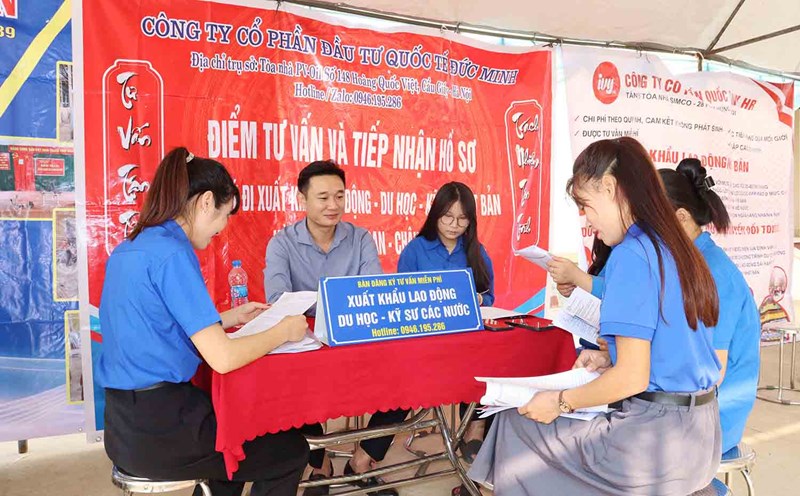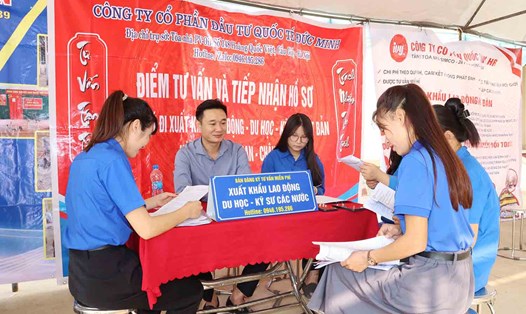Clean power lines cross the ocean
According to the Department of Industry and Trade of Ca Mau province, from June 2023 to present, many large economic groups from Singapore and Malaysia have come to work in Ca Mau regarding electricity purchase negotiations. The Provincial Party Committee and the People's Committee of Ca Mau province also organized a working delegation to Singapore, meeting and exchanging with the Singapore Energy Market Regulatory Authority (EMA) and investors.
During his trip to attend the 46th ASEAN Summit in May 2025 in Kuala Lumpur - Malaysia, Politburo member and Prime Minister Pham Minh Chinh, the Malaysian Prime Minister and the Singapore Prime Minister witnessed the signing ceremony and exchange of development cooperation agreements between the leading energy groups of the three countries on renewable energy exports from Vietnam to Malaysia and Singapore.
According to the agreement, the parties will study the feasibility of exporting clean electricity from Vietnam to Malaysia and Singapore via underground cables, connecting to the national power grid of the Malaysian peninsula, and at the same time consider the possibility of supplementing power sources and storage systems to ensure stability.
Based on this agreement, Ca Mau province can coordinate with the Vietnam National Industry - Energy Group to study and propose a plan to implement electricity exports from Ca Mau.
Clean power source in the far South of the Fatherland
Ca Mau province has 3 sides bordering the sea, a coastline of 310km long, an average sea wind speed and average hours of sunshine per year, and a large amount of thermal radiation, so it has great potential and advantages for developing clean energy such as: Wind power and solar power.
According to the Department of Industry and Trade of Ca Mau province, the province is currently operating 14 wind power plants; 2,827 projects to install rooftop solar power systems with a total capacity of 295.494 MWp. The province is also implementing investment in the Bac Lieu LNG gas power project with a capacity of 3,200MW, 34 wind power projects with a total capacity of 2,309MW, 2 concentrated solar power projects with 100MW and 117MW of self-produced and self-consumed rooftop solar power with additional development plans expected to be completed and commercially operated before 2030.
In addition, in the province, there are about 400,000 hectares of aquaculture land estimated to be able to develop more than 11,500MW of solar power combined with aquaculture, this form of combination does not change the purpose of land use.
neighboring countries such as Singapore, Malaysia, Thailand... are in high demand for electricity imports to develop the economy because the cost of electricity production in these countries is higher than that of imports. Electricity exports through direct transmission by undersea cables crossing the sea without the national grid.
The coastal area of Ca Mau province is neighboring these countries, so it is very favorable for electricity export...
With many advantages in terms of terrain and nature, along with investment research and proposals, the People's Committee of Ca Mau province has been approved by the Prime Minister for the Ca Mau Province Power Export Project with a capacity of 2,000 - 5,000 MW in the list of the VIII Power Plan Adjustment in Decision No. 768/QD-TTg dated April 15, 2025 of the Prime Minister.
Unblocking barriers
According to the People's Committee of Ca Mau province, the biggest barrier at present is the legal framework for investing in electricity export projects from wind and solar fields; Assembly and conversion stations; Underground cable lines, overhead lines and power receiving conversion stations in countries... which need to have common practices of the governments of countries.
Electricity exports are large-scale projects, requiring huge capital and consortia and cooperation of economic organizations with sufficient potential. Synchronous investment in all items is very difficult, while dividing them into individual projects is difficult to ensure consistency.
This is a major, unprecedented policy related to energy security, national defense, diplomacy and island sovereignty. Currently, the Vietnamese legal framework has not yet regulated the purchase and sale of electricity to foreign countries without going through the national grid, nor has it determined the authority to approve projects for underground cables crossing the sea or the mechanism for selecting international investors.
To implement sustainably, it is necessary to build a clear and transparent electricity export mechanism regarding selling prices, approval procedures and legal corridors for private enterprises to participate. At the same time, expand bilateral and multilateral cooperation in the region, especially with Singapore, Malaysia, Thailand, etc.
Developing renewable energy will be a strategic opportunity for Ca Mau to break through, becoming a green energy center of the country and the region.











